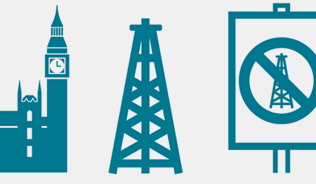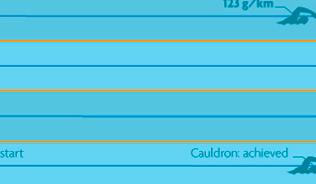Last month the IES published its annual membership survey. The majority of the questions were seeking quantitative responses and these were included in the report. However, the survey also includes a number of free text boxes for members to comment on services and to make general comments on the performance of the Institution.
We pride ourselves on being a member-driven organisation and the Project Office team discusses these comments in depth to see where we can improve our membership offering.
There were a number of comments that we have acted on already. One member requested that we set out a longer timetable of our popular CEnv in a Day workshops, so we have now listed the next three workshops on our Events page.
Throughout the comments what came through strongly was the popularity of the new webinars and we are determined to undertake more of these in the future. There was also praise for the regional meetings and a strong desire to see this programme expanded. For both of these endeavours we need the help of our Members. If you have a topic that would be of interest to our members, let us know and we can help you develop a presentation and organise the software for you to broadcast your research as a webinar. If you want to see more events in your area get involved in your local regional group or sector group by following the links on our Groups page. We are always on the lookout for venues, speakers and local enthusiasts to help us expand our programme of events.
A major challenge of running a membership body as diverse as the IES is balancing the (often conflicting) demands from members with different professional interests, preferred communication methods, technological know-how and who are at different stages of their career. For every member who wants less communication through social media, or who wants us to concentrate more on early-career professionals, there will be another arguing that we don’t do enough on LinkedIn, or that we spend too many of our resources on graduates. Reading through the comments reinforces the old adage that it is impossible to please all of the people, all of the time.
We try our best to be accommodating of members needs but limited resources – in terms of both staff time and financial resources – mean that some calls cannot be acted on at this time. For example, we do not have the staff time to provide weekly newsletters or initiate one-to-one discussions on professional development.
There was some good feedback around our new CPD tool, with members finding it intuitive and easy to use. A number of respondents commented that they currently use other CPD recording systems and it is worth clarifying that the tool allows you to upload PDFs from other systems to avoid having to replicate the record. A number of members complained about having troubles with the system with older versions of Internet Explorer. This is a known issue but unfortunately it was too costly for us to make the tool backwardly compatible with older versions of IE. We have fully tested the pages in Microsoft Edge which will soon be replacing Internet Explorer. Members can also use other browsers such as Chrome, Firefox or Safari.
Below I have directly answered a number of issues that were raised by members:
- A direct link to the CPD tool would be useful – The CPD tool is restricted to Members only so you need to log in through the Members’ Area.
- Please stop sending me the paper magazine. It is a waste of a tree – You can sign up for web access only to the journal through the Members’ Area. Just click on ‘Email Services’ and tick the ‘Electronic Journal’ box.
- Develop another professional qualification besides CEnv, CSci – The IES has recently launched its new Lead Energy Assessor register and later this year we will begin running Registered Environmental Technician (REnvTech).
- The website could be divided better into topic areas – In the right hand column of the homepage there is a section called ‘Areas we cover’. If you click on any sector, it pulls through all the content for that sector. Alternatively you can use the search function at the top of every page to look for specific keywords.
- Consider having "specialist group" pages/areas – We manage our special interest groups through LinkedIn. Access to these discussion groups is through the Groups page of our website.
- Sometimes it is difficult to get back to the home page – To return to the homepage from any IES page, just click on the IES logo at the top of the page.
- In depth interviews with members could be interesting – Profiles of members are published in ES Monthly. If you are interested in having yours featured, get in touch.
- The IES should be lobbying government – Under our charitable status and our constitution the IES is unable to lobby Government. We do however engage in a wide range of policy activities to ensure that legislation is underpinned by evidence. For example, we regularly respond to calls for evidence from Government, parliamentary select committees and other bodies, and collaborate with government departments to ensure that the voices of environmental scientists are heard.
- It would be great to have events in Wales. Happy to help - Please get in contact! The IES survey is anonymous so please contact us directly.





